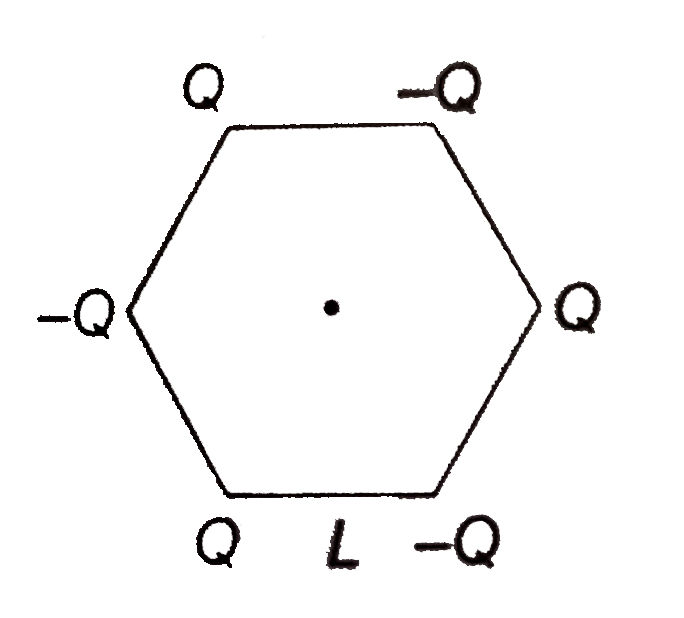Six point charges are kept at the vertices of a regular hexagon of side L and centre O, as shown in the figure. Given that K=14πε0qL2, which of the following statements(s) is (are) correct?
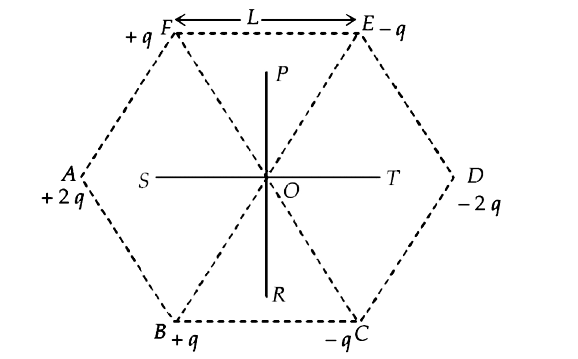
The electric field at O is 6K along OD
The potentail at O is zero
The potentail at all points on the line PR is same
The potential at all points on the line ST is same
The correct Answer is:A, B, C
In Fig, L is the length of each side of a regular hexagon ABCDEF, at the vertices of which six point charges are held.
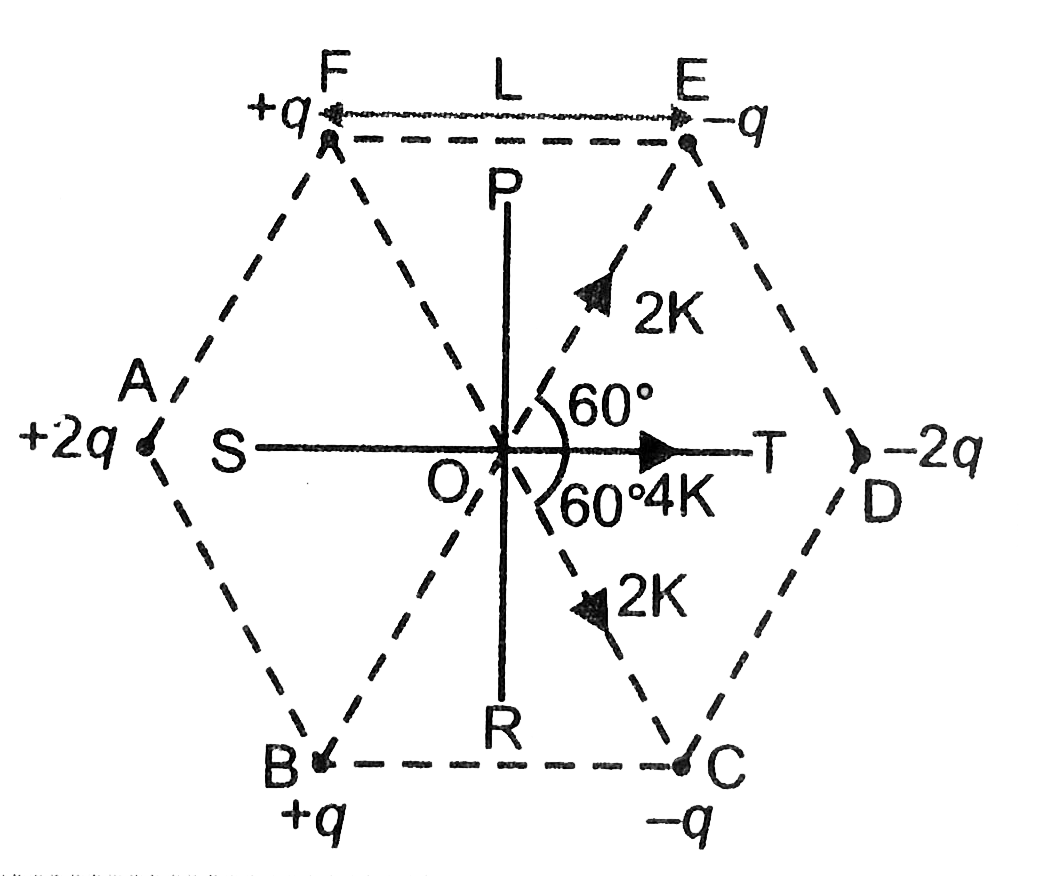
Imagine a unit positive charge at O.
Electric intensity at O due to +2q charge at A
=2q×14π∈0L2=2K, along OD
Electric intensity at O due to −2q charge at D=2K, along OD.
Electric intensity at O due to +q charge at B and −q charge at E=2K, along OE
Electric intensity at O due to −q charge C abd +q charge at F=2K, along OC
As ∠COE=120∘, therefore , resultant of 2K along OC and 2K along OD.
∴ Net electric intensity at 0=4K+2K=6K along OD
Potential at O,V=−dEdr=ddr(6K)=Zero
A closer look at figure shows that PR is equatorial line of these electric dipoles (−q,+q) at E,F,(−2q+2q) at D,A and (−q,+q) at C,B.
Hence potential at all points on PR is zero (i.e., same).
The choices (a), (b), (c ) are correct.
Topper's Solved these Questions
- BOOK - PRADEEPCHAPTER - ELECTROSTATICSEXERCISE - FILL IN THE BLANKS8videos
ELECTROSTATICS
- BOOK - PRADEEPCHAPTER - ELECTROSTATICSEXERCISE - PROBLEMS FOR PRACTICE8videos
ELECTROSTATICS
- BOOK - PRADEEPCHAPTER - ELECTROSTATICSEXERCISE - VALUE BASED QUESTIONS7videos
ELECTROSTATICS
- BOOK - PRADEEPCHAPTER - ELECTRONIC DEVICESEXERCISE - Fill in the Blanks1videos
ELECTRONIC DEVICES
- BOOK - PRADEEPCHAPTER - MAGNETIC EFFECT OF CURRENT AND MAGNETISMEXERCISE - Competition Focus (Multiple Choice Questions)2videos
MAGNETIC EFFECT OF CURRENT AND MAGNETISM
Similar Questions
Knowledge Check
- Question 1 - Select One or More
Five point charges each of charge + q are placed on five vertices of a regular of side h as shown in the figure. Then
Athe forces on (-q) at O due to charges +q at A and D are balanced.Bthe forces on (-q) due to charges at D and E are balanced.CThe resultant force on −q at O is 14πε0q2h2 along OE.DThe resultant force on - q at O is 14πε0q2h2 along OC. - Question 2 - Select One
Six point charges are arrange at the vertices of a regular hexagon of side length a (shown in figure).
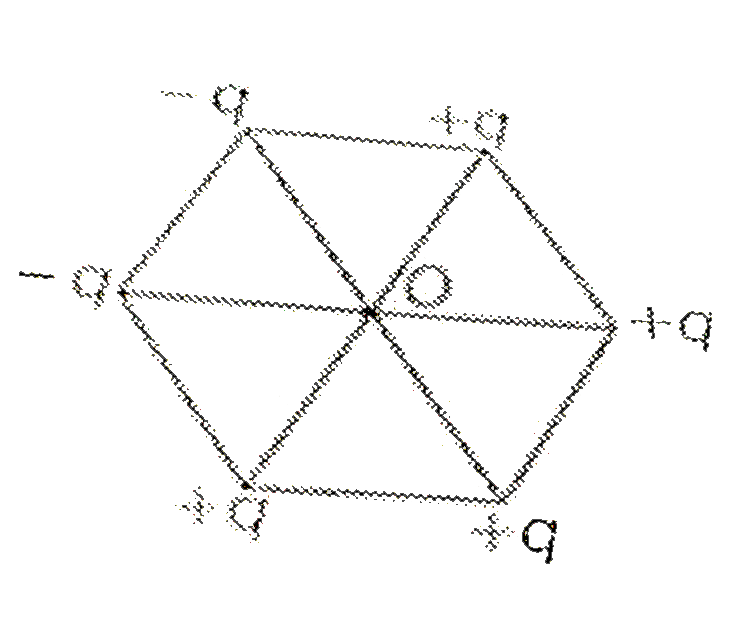
Find the magnitude of electric field at the centre of regular hexagon.Aq4πε0a2BzeroCq2πε0a2Dnone of these - Question 3 - Select One
Six point charges are placed at the vertices of a regular hexagon of side a as shown. If E represents electric field and V represents electric potential at O then,
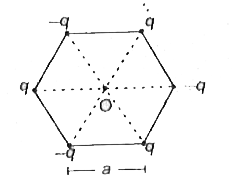 AE = 0 but V ≠ 0BE ≠ 0 but V = 0CE = 0 and V = 0DE ≠ 0 and V ≠ 0
AE = 0 but V ≠ 0BE ≠ 0 but V = 0CE = 0 and V = 0DE ≠ 0 and V ≠ 0
One end of a horizontal uniform beam of weight W and length L is hinged on a vertical wall at point O and its other end is supported by a light inextensible rope. The other end of the rope is fixed at point Q at a height L above the hinge at point O. A block of weight αW is attached at the point Q at a height L above the hinge at point O. A block of weight αW is attached at the point P of the beam as shown in the figure. The rope can sustain a maximum tension of 2(√2)W. Which of the following statements is/are correct?
 View Solution
View SolutionSix charges are kept at the vertices of a regular hexagon as shown in the figure. If magnitude of force applied by +Q on +q charge is F, then net electric force on the +Q is nF. Find the value of n.
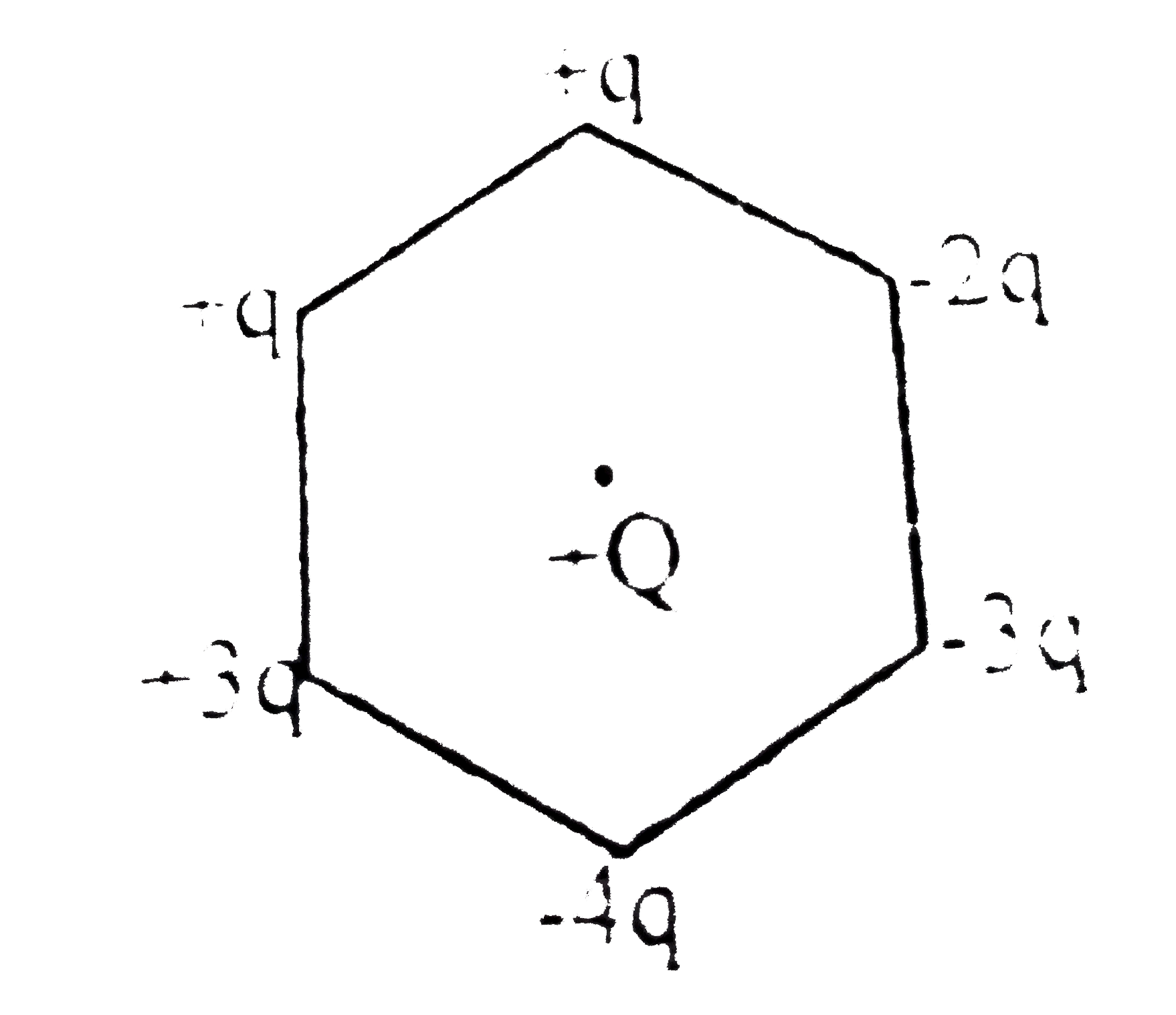 View Solution
View SolutionFive identical charges are kept at five vertices of a regular hexagon. Match the following two columns at centre of the hexagon. If in the given situation electric field at centre is E, then,
 View Solution
View Solution(a) Three point charges q,-4q and 2q are placed at the vertices of an equilateral triangle ABC of side 'l' as shown in the figure. Obtain the expression for the magnitude of the resultant electric force acting on the charge q.
(b) Find out the amount of the work done to separate the charges at infinite distance.
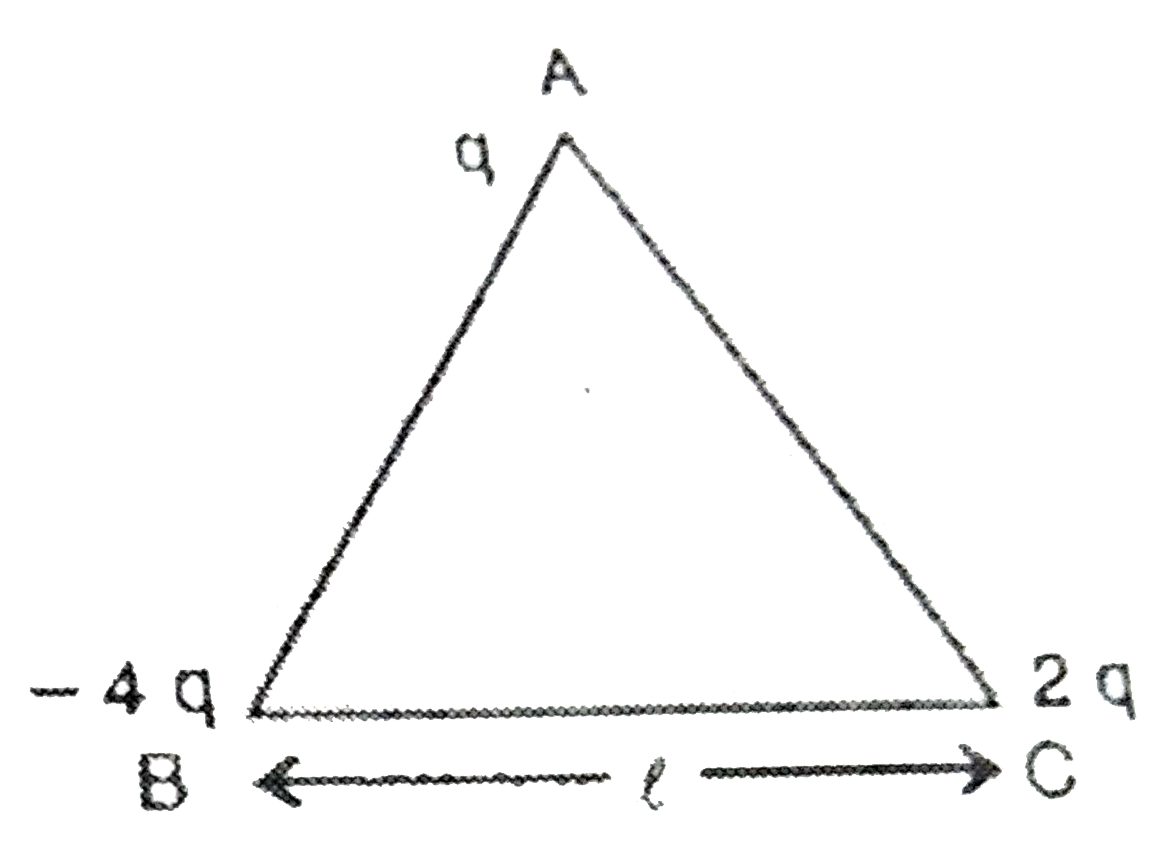 View Solution
View SolutionFive point charge (+q each) are placed at the five vertices of a regular hexagon of side 2a.what is the magnitude of the net electric field at the centre of the hexazon?
View Solution


